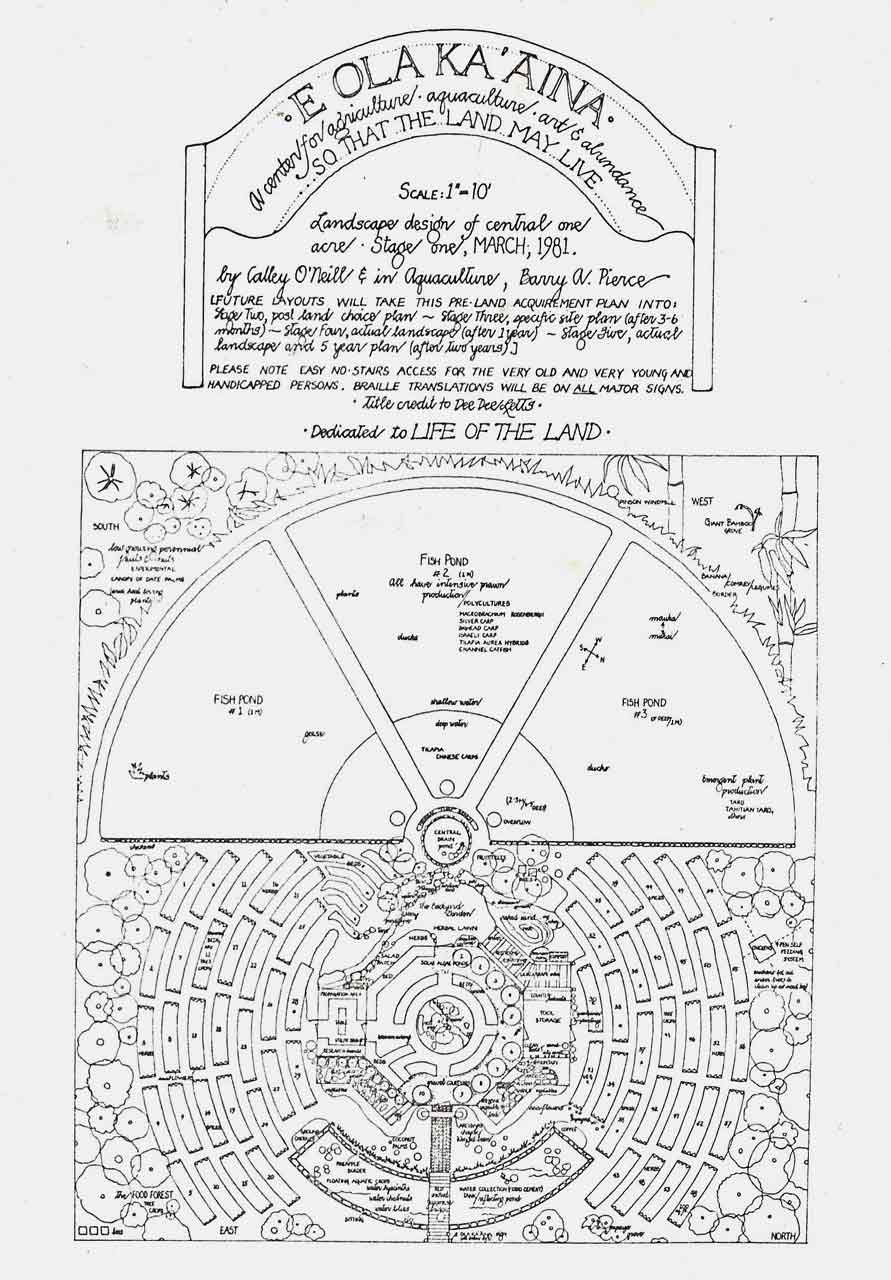Email: Calley@CalleyO'Neill.com
E OLA KA'AINA
E OLA KA’AINA (SO THAT THE LAND MAY LIVE)
Calley O’Neill and Dr. Barry Costa-Pierce, Waimanalo, Hawai'i, 1981
E OLA KA’AINA, a functional model of a ‘future’ agro-ecosystem, will demonstrate the validity of small-scale food production and the essential merger of agriculture and aquaculture. In its final form, E OLA KA’AINA will be a fully integrated agricultural/aquacultural landscape; a demonstration site and education center revealing small-scale ecological food production in the wet and dry tropics. E OLA KA’AINA will demonstrate that Hawaii’s uneasy dependence on imported foods and energy is unnecessary.
In this regard, the conceptual design of E OLA KA’AINA goes beyond a mere reduction of adverse environmental impacts into positive ecological enrichment and reclamation. A leading edge demonstration site such as this has far-reaching economic and ecological potential, providing residents with what they now import or do without: a wide variety of native and exotic food fish species, fruit and nut trees, shrubs, herbs, spices, vegetables, edible flowers, and other useful cultivars including bamboo and calabashes. E OLA KA’AINA will be the most innovative nursery/landscape on Oahu, going where other nurseries are unwilling or unable to tread, into edibles, community dynamics and participation, the challenge of careful, integrated pest management, and innovative marketing techniques.
The goal of E OLA KA’AINA is simple: the reintegration of abundance and beauty, and their magnetic attraction. In the marriage of aquaculture and agriculture, concrete solutions to challenges currently being addressed by limited technological and chemical advances will be actualized.
The demonstration site and its numerous components are detailed in Figure 1. This brief description will delineate the form and function of the landscape elements and their interrelationships. The educational benefits of this model of innovative, diversified agriculture are not emphasized here, significant on every level of education from primary to graduate school and beyond. Click HERE and scroll to numbered Paragraph 1 to continue reading.
Art and Soul for the Earth
Big Island of Hawai'i





